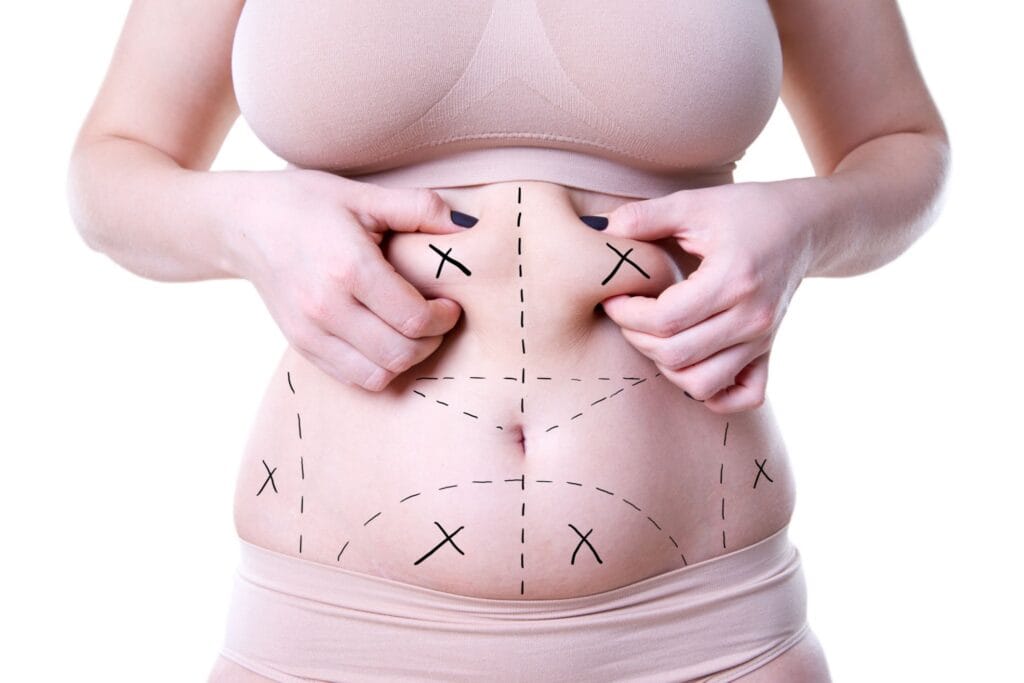Liposuction, often referred to as “lipo,” is a surgical procedure designed to remove stubborn fat deposits that are resistant to diet and exercise. It’s a popular cosmetic procedure aimed at body contouring, helping individuals achieve a more sculpted and defined physique. While it’s not a weight-loss solution, liposuction can effectively target specific areas, enhancing overall body shape and confidence. This article provides a comprehensive overview of liposuction, covering the procedure, risks, recovery, and ideal candidates.
Table of Contents
Understanding Liposuction
Liposuction is a body contouring procedure, not a weight-loss method. It’s crucial to understand this distinction. Liposuction targets localized fat deposits that are resistant to diet and exercise, such as those in the abdomen, thighs, hips, buttocks, and arms. The procedure removes fat cells permanently, meaning the treated areas are less likely to accumulate fat again in the future. However, weight gain in other areas of the body is still possible.
The amount of fat removed during liposuction varies depending on the individual’s body composition, the targeted areas, and the surgeon’s assessment. It’s essential to have realistic expectations; liposuction is not a magic bullet for achieving a perfect body. The goal is to improve body contours and proportions, enhancing the overall aesthetic appearance. A thorough consultation with a qualified plastic surgeon is necessary to determine if liposuction is the right choice and to discuss realistic expectations.
Before undergoing liposuction, patients should be in relatively good health and maintain a stable weight. Pre-operative assessments, including blood tests and medical history review, are standard practice to ensure the patient is a suitable candidate. The surgeon will discuss the procedure in detail, including the risks and benefits, and answer any questions the patient may have. Open communication is vital for a successful outcome.
Choosing a board-certified plastic surgeon is paramount. A qualified surgeon possesses the necessary expertise and experience to perform the procedure safely and effectively, minimizing risks and maximizing results. Researching potential surgeons, reviewing their credentials, and reading patient testimonials are crucial steps in making an informed decision. The surgeon’s reputation and experience should be carefully considered.

The Procedure Explained
Liposuction typically involves making small incisions in the skin, through which a cannula (a thin, hollow tube) is inserted. The cannula is connected to a vacuum system that gently suctions out the fat cells. Different techniques exist, including tumescent liposuction (using a fluid solution to numb and loosen the fat), ultrasound-assisted liposuction (using ultrasound energy to break down fat), and laser-assisted liposuction (using laser energy to melt and remove fat). The surgeon will determine the most appropriate technique based on the individual’s needs and the areas being treated.
The procedure can be performed under local anesthesia, sedation, or general anesthesia, depending on the extent of the surgery and the patient’s preferences. The choice of anesthesia is discussed with the anesthesiologist and the patient prior to the procedure. The duration of the surgery varies depending on the number of areas being treated and the amount of fat being removed. It can range from a few hours to several hours.
Following the procedure, compression garments are typically worn to minimize swelling and support the treated areas. These garments are worn for several weeks post-surgery. The incisions are usually small and closed with stitches or surgical tape. Patients are typically discharged on the same day or the following day, depending on the extent of the procedure and the type of anesthesia used.
Post-operative care instructions are provided by the surgeon, including guidelines on pain management, activity levels, and wound care. Follow-up appointments are scheduled to monitor healing progress and address any concerns. The surgeon will provide guidance on when it’s safe to resume normal activities.

Risks and Recovery Time
As with any surgical procedure, liposuction carries potential risks and complications. These can include bleeding, infection, bruising, swelling, pain, numbness, skin irregularities, and seroma formation (fluid accumulation under the skin). While rare, more serious complications such as blood clots, pulmonary embolism (blood clot in the lung), and fat embolism (fat particles entering the bloodstream) can occur. The surgeon will discuss these risks in detail during the consultation.
Recovery time varies depending on the extent of the procedure and the individual’s healing process. Swelling and bruising are common and typically subside within several weeks. Patients can expect some discomfort and may require pain medication during the initial recovery period. Most individuals can return to light activities within a few days, but strenuous activities should be avoided for several weeks.
The use of compression garments is crucial during the recovery period to minimize swelling and support the treated areas. Following the surgeon’s post-operative instructions is essential for optimal healing and minimizing the risk of complications. Regular follow-up appointments allow the surgeon to monitor progress and address any concerns.
It’s important to maintain a healthy lifestyle after liposuction, including a balanced diet and regular exercise, to maintain the results. While liposuction removes fat cells permanently from the treated areas, weight gain in other areas of the body is still possible. Maintaining a healthy weight and lifestyle is crucial for long-term results.

Ideal Candidates & Results
Ideal candidates for liposuction are generally healthy individuals who are at or near their ideal weight and have localized fat deposits that are resistant to diet and exercise. They should have realistic expectations about the procedure and understand that it’s not a weight-loss solution. Good skin elasticity is also important for optimal results. Patients with significant medical conditions or those who are obese may not be suitable candidates.
The results of liposuction are typically permanent, as the removed fat cells do not regenerate. However, maintaining a stable weight is crucial to preserve the results. Weight gain can affect the overall body shape, even in areas not treated with liposuction. The procedure aims to improve body contours and proportions, resulting in a more sculpted and defined physique.
A thorough consultation with a board-certified plastic surgeon is essential to determine if liposuction is the right choice for an individual. The surgeon will assess the patient’s overall health, body composition, and expectations to determine suitability and discuss realistic outcomes. Pre-operative photographs are often taken to document the starting point and track progress.
The decision to undergo liposuction should be a personal one, based on individual goals and expectations. It’s important to choose a qualified and experienced surgeon who can provide personalized care and realistic assessments. The goal is to achieve a natural-looking improvement in body contours, enhancing self-confidence and body image.
Liposuction can be a valuable tool for body contouring, helping individuals achieve a more sculpted and defined physique. However, it’s crucial to understand the procedure’s limitations and potential risks. Choosing a qualified surgeon, having realistic expectations, and maintaining a healthy lifestyle are key factors in achieving successful and lasting results. Always consult with a board-certified plastic surgeon to determine if liposuction is the right option for you.
Transform Your Confidence with Surgyteam!
Join the thousands of satisfied patients who have experienced the exceptional care and expertise of Surgyteam’s renowned plastic surgeons. Whether you’re seeking aesthetic enhancements or reconstructive surgery, our dedicated team in Antalya is here to provide you with the highest quality treatment and personalized care.


